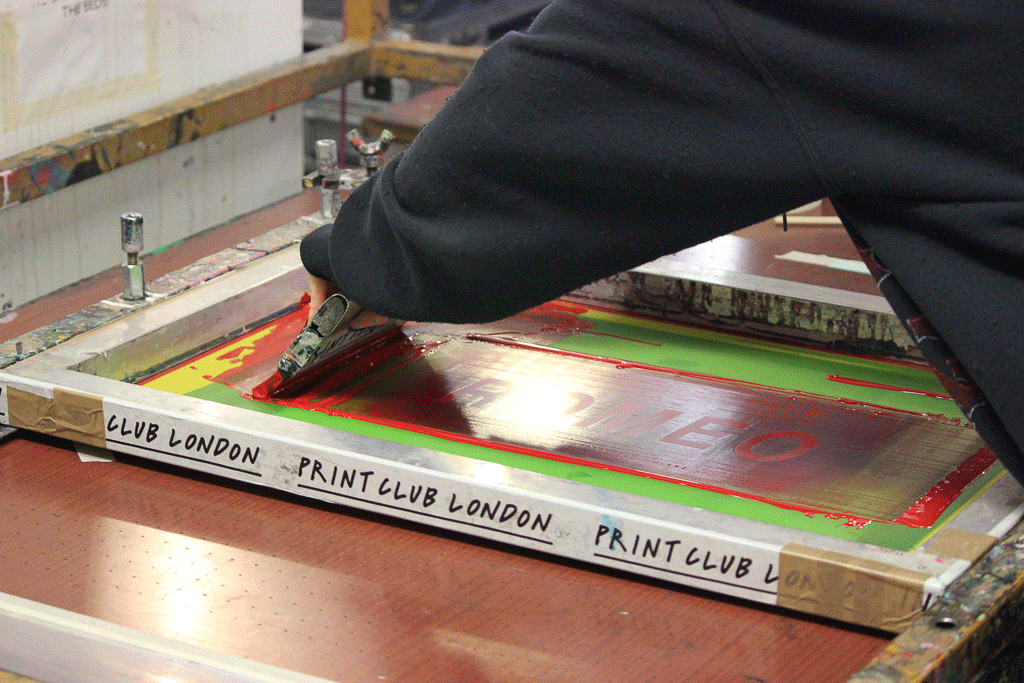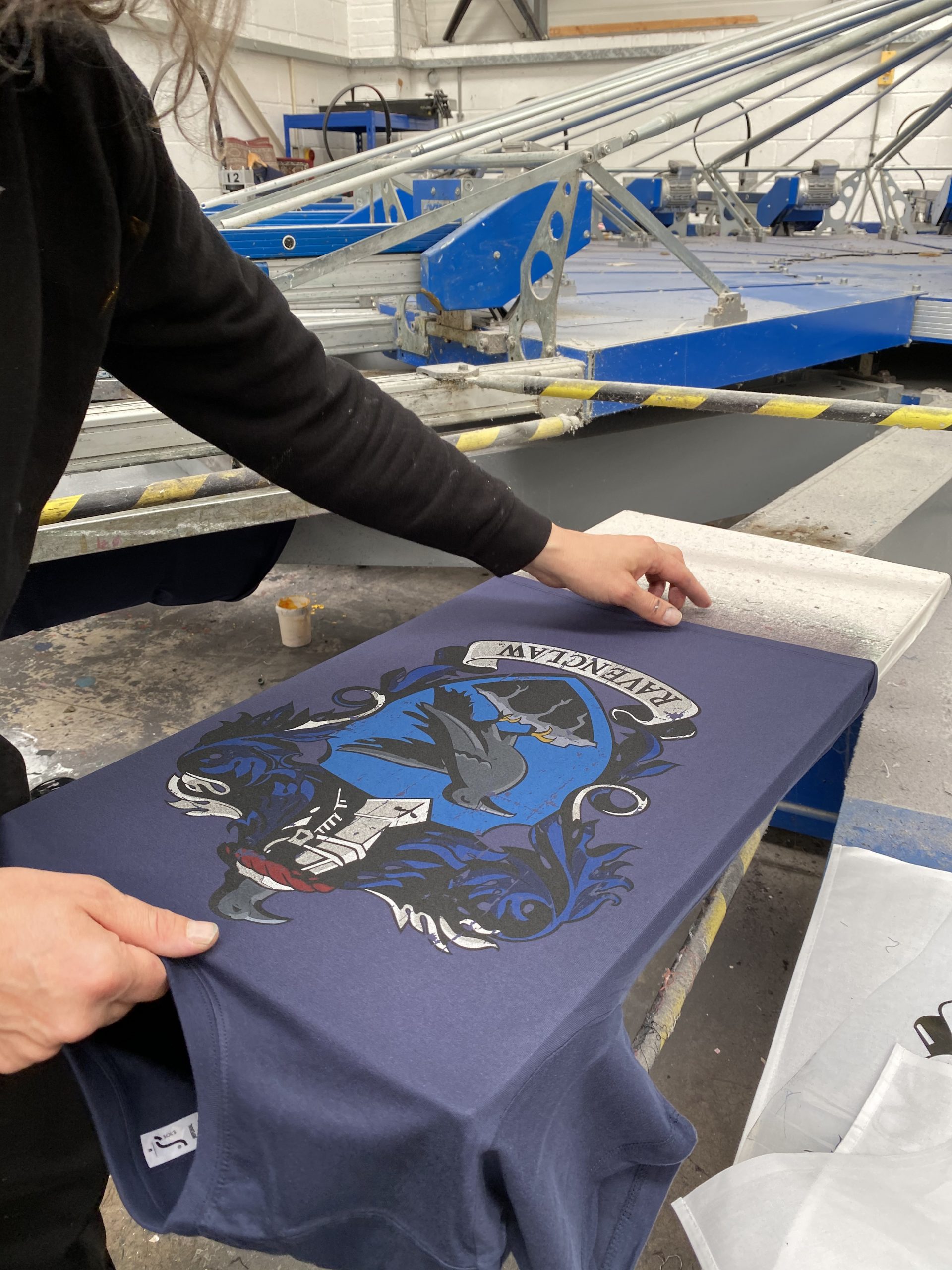The Crucial Guide to Recognizing Screen Printing and Its Versatile Uses
Screen printing has a rich history that goes back to ancient times, developing into a sophisticated method used throughout various sectors today. This guide discovers the complexities of the screen printing process, describing its applications in home, style, and advertising and marketing style - 10:9 Design Screen Printing Texas. Recognizing these fundamentals can open innovative potential for both business and creative jobs. The complying with areas will disclose necessary tips and methods to boost one's screen printing endeavors
The History of Screen Printing
Screen printing has origins that map back centuries, its development shows the artistic and technical improvements of different cultures. Originating in ancient China, the method was originally utilized for enhancing textiles and later spread to Japan, where it became integral to Ukiyo-e woodblock printing. The technique moved to Europe in the 18th century, where it acquired popularity amongst artisans and business printers. The innovation of picture solution in the 20th century transformed screen printing, permitting more intricate layouts and greater efficiency. Musicians like Andy Warhol further propelled its popularity, using the tool to create famous works that mixed commercialism and fine art. By the late 20th century, screen printing had established itself as a versatile method, employed in vogue, advertising, and great art. Today, it remains to progress, incorporating electronic technology and broadening its applications across different markets.
The Screen Printing Refine Explained
Screen printing changes imaginative visions right into tangible designs through a series of precise actions. At first, a photo is created and after that transferred onto a screen, commonly constructed from fine mesh fabric stretched over a framework. A light-sensitive solution is used to the screen, which is subjected to light, setting in locations not covered by the image. After rinsing the unhardened emulsion, a stencil is created.
Next, the screen is placed over the substratum, whether it be fabric, paper, or an additional material. Ink is after that pushed through the open locations of the stencil using a squeegee, depositing the style onto the substratum listed below. This procedure can be duplicated for several colors, calling for separate displays for each color. The published product is cured making use of heat to guarantee the ink adheres correctly, resulting in a sturdy, lively layout prepared for usage.
Kinds Of Screen Printing Techniques

Additionally, specialty techniques, such as discharge screen printing, get rid of color from the fabric to create softer prints, while aluminum foil screen printing applies metal foil to attain a shiny finish (10:9 Design near me). Each technique supplies distinct qualities, catering to various imaginative requirements and production scales, ultimately increasing the opportunities within the screen printing domain name
Applications of Screen Printing in Various Industries

Furthermore, the signs and advertising fields use screen printing for developing attractive display screens and banners. This method allows for vibrant colors and complex designs that catch interest. In electronics, screen printing is employed for using conductive inks to circuit boards, essential for part links. Moreover, the home decoration industry embraces screen printing to generate unique designs on fabrics and wall art. Generally, screen printing acts as a crucial device throughout varied areas, improving items with personalized and aesthetically appealing graphics.
Tips for Successful Screen Printing Projects
While undertaking a screen printing job, careful attention to detail can substantially improve the final outcome. Initially, picking high-quality products is important; this includes the screen, inks, and substratums. Making use of proper mesh matters can impact ink deposition and information resolution. Preparation is just as crucial; thorough cleansing of displays and proper direct exposure times assure crisp prints.
Next, accurate registration is crucial for multi-color prints. Making use of placement devices can help achieve specific layering. Furthermore, testing prints on scrap products prior to manufacturing helps determine prospective problems without wasting sources.

Regularly Asked Inquiries
What Materials Are Ideal for Screen Printing on Material?
Cotton and polyester blends are excellent for screen printing on textile because of their toughness and ink absorption. In addition, specialty textiles like silk or canvas can produce unique structures and finishes, enhancing the overall style high quality.
How Do I Clean and Maintain Screen Printing Tools?
To clean website and maintain screen printing equipment, one should consistently clean displays with appropriate solvents, check mops for wear, oil moving parts, and store all things in a dry, dust-free environment to prolong their life expectancy.
What Are the Ecological Impacts of Screen Printing?
Screen printing can have significant environmental effects, including chemical waste from inks and solvents, water usage during cleaning processes, and energy usage. Green materials and sustainable methods are important for decreasing these negative impacts.
Can Screen Printing Be Done in the house Effectively?
Screen printing can be efficiently done at home with the right materials and techniques. Enthusiasts can develop top quality prints, though success depends on their skill level, equipment, and understanding of the procedure involved.
What Are the Costs Connected With Starting a Display Printing Service?

Starting a screen printing organization entails expenses for tools, products, and work area. Preliminary expenses commonly vary from a couple of hundred to several thousand dollars, relying on the range, quality of machinery, and wanted manufacturing capacity.
Screen printing has an abundant background that dates back to ancient times, developing right into a sophisticated method utilized throughout numerous industries today. One more method, rotating screen printing, uses cylindrical screens, promoting continual printing on textile rolls, consequently enhancing effectiveness for large manufacturings. In addition, specialized techniques, such as discharge screen printing, get rid of color from the textile to produce softer prints, while aluminum foil screen printing applies metal foil to achieve a shiny coating. In the fashion industry, screen printing is commonly used to produce vivid layouts on apparel, enabling brands to showcase their special styles. Cotton and polyester blends are perfect for screen printing on material due to their sturdiness and ink absorption.